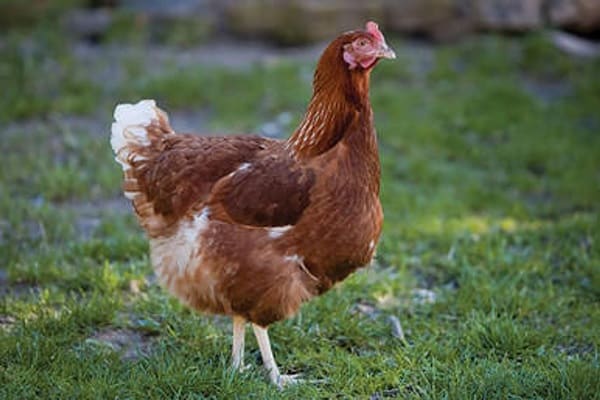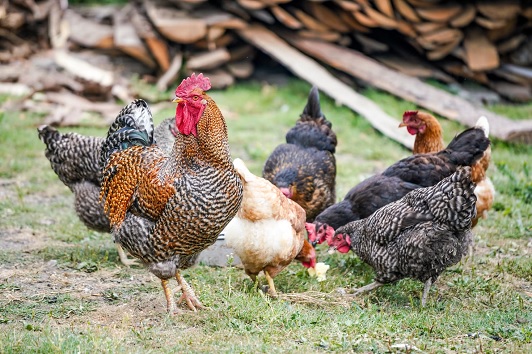Are you looking to add a touch of charm and vibrancy to your backyard flock? Look no further than the Cinnamon Queen Chicken. These beautiful birds are not only a delightful addition but also a joy to raise. In this guide, I will share essential tips and care guidelines to ensure you provide the best environment for your Cinnamon Queen Chickens. Get ready to discover the secrets to raising these captivating creatures and maximizing their egg production!
Here are the main points:
- Learn about the personality traits of Cinnamon Queen Chickens.
- Explore the stunning color variations these chickens come in.
- Discover their housing, feeding, and health considerations for optimal care.
- Unveil the fascinating world of Cinnamon Queen Chicken egg production.
- Find out when you can expect these chickens to start laying eggs.
Introduction to Cinnamon Queen Chickens
When it comes to backyard chickens, Cinnamon Queen Chickens are a popular choice due to their remarkable personality and stunning colors. These chickens have a friendly and docile nature, making them a joy to interact with. They are known for their inquisitive and gentle demeanor, making them great companions for both adults and children. Whether you are a beginner or an experienced chicken keeper, Cinnamon Queens are sure to win your heart with their delightful and sociable personalities.

But it’s not just their personality that sets them apart – the colors of Cinnamon Queen Chickens are simply breathtaking. These chickens boast a beautiful combination of rich browns, reds, and whites. The feathers of the Cinnamon Queens exhibit intricate patterns and shades, creating a visually striking appearance. They are truly a sight to behold in any backyard flock, adding a touch of vibrant color and beauty.
The Color Variations of Cinnamon Queen Chickens
Cinnamon Queen Chickens come in a range of stunning color variations. The most common and recognized color pattern is the rich reddish-brown plumage, often accompanied by white feathers on the chest and tail. This combination of colors creates a striking contrast, adding an element of elegance to their appearance.
In addition to the traditional color pattern, some Cinnamon Queen Chickens display slight variations in their coloring. It is not uncommon to find individuals with darker or lighter shades of brown, making each chicken unique and adding a touch of diversity to your flock.
I am constantly amazed by the vibrant colors of my Cinnamon Queen Chickens. Their feathers shimmer in the sunlight, creating a stunning display of warm and earthy tones. It’s like having a living work of art in my backyard!
| Color Variation | Description |
|---|---|
| Rich Reddish-Brown with White Feathers | The classic color pattern of Cinnamon Queen Chickens, creating a striking contrast between the red and white feathers. |
| Dark Brown | Some Cinnamon Queens exhibit a darker shade of brown, adding depth and richness to their appearance. These individuals are particularly eye-catching. |
| Light Brown | On the other end of the spectrum, you may find Cinnamon Queens with a lighter shade of brown. Their feathers have a subtle and delicate hue, radiating a gentle beauty. |
As you can see, the colors of Cinnamon Queen Chickens are as diverse as their personalities. Whether you prefer the traditional reddish-brown color or enjoy the uniqueness of darker or lighter variations, these chickens are sure to captivate you with their exquisite appearance.
Caring for Cinnamon Queen Chickens
When it comes to caring for Cinnamon Queen Chickens, there are several essential aspects to consider. Proper care ensures the health and well-being of these beautiful birds, as well as optimal egg production. In this section, I will guide you through the key factors involved in caring for your Cinnamon Queen Chickens.
Housing Requirements
Providing a suitable and comfortable living space is crucial for the well-being of your Cinnamon Queen Chickens. They require a coop that offers protection from predators, adequate ventilation, and ample space for each bird to move around. Make sure the coop is clean and well-maintained, with nest boxes for egg-laying and roosting bars for perching at night.
Feeding and Nutrition Needs
A balanced and nutritious diet is essential for the overall health and productivity of Cinnamon Queen Chickens. They thrive on a diet consisting of high-quality layer feed supplemented with grains, fresh fruits, and vegetables. Ensure they have access to clean water at all times and consider providing calcium supplements to support strong eggshells.
Health Considerations
Regular health checks are vital to detect and prevent any potential issues with your Cinnamon Queen Chickens. Keep an eye out for signs of illness or injury, and consult a veterinarian if necessary. Additionally, provide regular worming and vaccination schedules to protect against common diseases and parasites.
Optimal Conditions for Egg Production
If you’re looking to maximize egg production from your Cinnamon Queen Chickens, creating optimal conditions is essential. They prefer a stable and stress-free environment with constant light exposure, ideally 14-16 hours of light per day. Maintaining proper temperature levels in the coop, around 75-85°F (24-29°C), can also contribute to increased egg production.
By following these essential care guidelines, you can ensure the health, happiness, and productivity of your Cinnamon Queen Chickens. Remember, a well-cared-for flock will reward you with delicious and abundant eggs throughout the year.
Cinnamon Queen Chicken Egg Production
In this section, we will delve into the fascinating world of Cinnamon Queen Chicken egg production. You will discover the average number of eggs they lay, the color variations of their eggs, and when you can expect these chickens to begin laying eggs.

Average Egg Production
Cinnamon Queen Chickens are known for their excellent egg-laying capabilities. On average, these chickens can lay approximately 250-300 eggs per year. This means you can expect to have a regular supply of fresh eggs from your flock.
Egg Color Variations
One of the unique characteristics of Cinnamon Queen Chicken eggs is their beautiful and diverse coloration. The color of their eggs can vary from light brown to a darker shade of brown. Some may even have speckles or spots on the surface, adding to their visual appeal.
When do Cinnamon Queen Chickens Start Laying?
The age at which Cinnamon Queen Chickens start laying eggs can vary slightly. Generally, you can expect them to begin laying around 4-5 months of age. This is earlier than many other chicken breeds, making them a popular choice for those looking for early egg production.
| Egg Traits | Description |
|---|---|
| Color | Light to dark brown with variations such as speckles or spots |
| Size | Medium to large |
| Production | Approximately 250-300 eggs per year |
| Starting Age | Around 4-5 months |
Concluding Remarks
Throughout this guide, we have explored the fascinating world of Cinnamon Queen Chickens. We have learned about their unique personality traits, beautiful color variations, and the essential aspects of their care. By following the tips and guidelines provided, you can confidently raise a vibrant backyard flock of these stunning chickens.
Cinnamon Queen Chickens are known for their friendly and docile nature, making them a great choice for families and beginners alike. Their striking colors, ranging from warm reddish-brown to rich cinnamon tones, add a touch of beauty to any flock.
When it comes to their care, ensure that these chickens have a spacious and secure coop, with proper ventilation and nesting areas. Providing them with a balanced diet that includes a combination of commercial chicken feed, fresh vegetables, and clean water will keep them healthy and happy.
Additionally, Cinnamon Queen Chickens are excellent egg layers, producing an average of 250 to 300 brown eggs per year. These eggs are not only delicious but also add a pop of color to your egg basket. With proper care and feeding, you can expect these chickens to start laying eggs at around 20 to 24 weeks of age.
FAQ’s About Cinnamon Queen Chickens
Q1: Are Cinnamon Queen chickens noisy?
Cinnamon Queen chickens are generally known for being quiet and docile, making them a relatively quiet breed compared to others.
Q2: What are the pros and cons of Cinnamon Queen chickens?
Pros: Excellent egg layers, friendly temperament, adaptable to various climates.
Cons: Limited availability, may be susceptible to common poultry health issues.
Q3: What size eggs do Cinnamon Queen chickens lay?
Cinnamon Queen chickens typically lay large to extra-large brown eggs.
Q4: What is another name for a Cinnamon Queen?
Cinnamon Queen chickens are also known by the name “Red Sex Link” due to their hybrid nature, created by crossing specific breeds for desirable traits.
